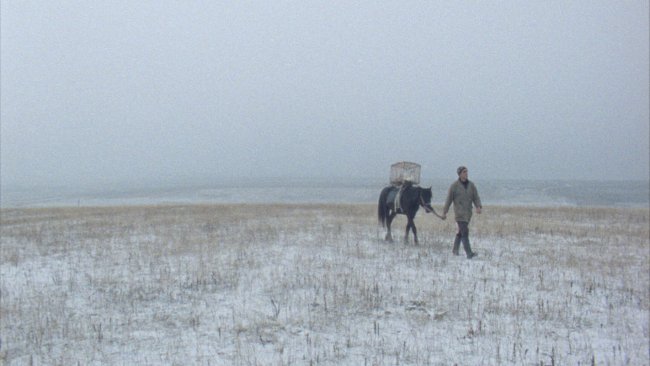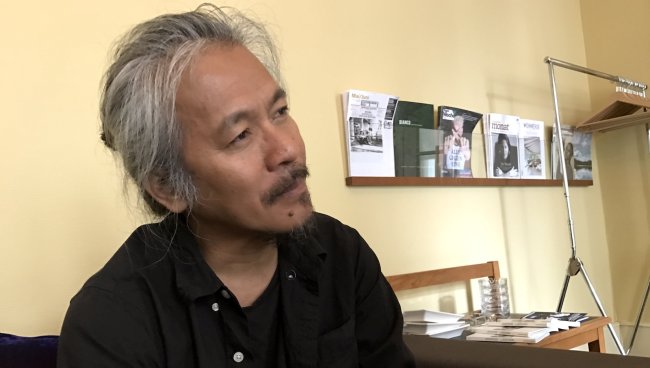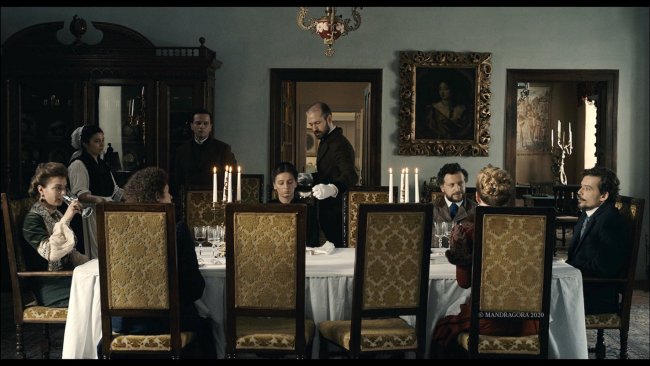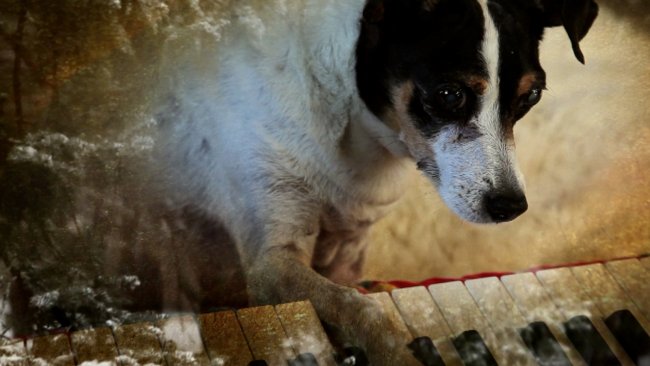Lek and the Dogs
[…] Kötting uses the potentialities of cinema so well and so precisely that ultimately Lek’s story assumes the role of a narrative support for a reflection and, indeed, an experience, that has a core that is both existential and philosophical.
[…] We cannot but perceive his story and his condition as an unfathomable object that, despite this, we feel as intimate as our own very existence on earth.
[…] Lek’s seeking refuge underground is synonymous with his retreat into his own body as it becomes his only security and strength. Thus, the wonderful images of the Atacama Desert are not only beautiful-and-unsettling but also just-beautiful, where the purely aesthetic beauty is doubled with the poetic beauty of the earth as resistant, as so much stronger than the humans.
Text: Giuseppe Di Salvatore
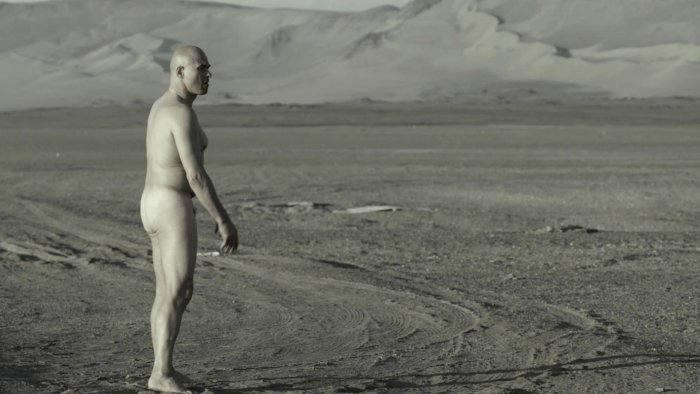
A story that extends beyond the fictional and the documentary
There would be more stories. There’s the story of Lek in the film Lek and the Dogs; there’s another story to which the first one refers, the story of Ivan in Hattie Naylor’s novel Ivan and the Dogs (2010); and again another one (to which Naylor’s novel refers) the original and true story of Ivan Mishukov, a child who has escaped from the family home to go and live with the dogs in the streets of Moscow – and under those streets. I say “would be”, for the network of connected layers between the actor Xavier Tchili (Lek) and the Russian child – or more generally, between the fictional and the documentary – appears to have limited relevance in Andrew Kötting’s filmic journey. Lek’s childhood trauma, his solidarity with the dogs and their nomadic survival within the city (thanks to the “protection” of the urban undergrounds), then his discovery of gentleness through a new family that hosts him, and through that family Lek will find himself, and finally his fear of humans that returns to his life, forcing him to abandon any societal bonds in order to seek sanctuary once more underground and alone with a black dog. This journey is depicted with such an intense tonality within the film that the curiosity that we might have about the real events in Russia, and more generally, the boundaries between the fictional and the documentary, lose all sense. Lek and the Dogs is a masterfully orchestrated experience, whose truth we should primarily measure through our own sensibilities.
The dogs and the existential discourse
Kötting uses the potentialities of cinema so well and so precisely that ultimately Lek’s story assumes the role of a narrative support for a reflection and, indeed, an experience, that has a core that is both existential and philosophical. The opening images of the film already express this meta-narrative discourse: Lek is completely naked and walks as a dog in the Atacama Desert; two new-born dogs agonise to death on a wood table… Being abandoned demands the necessity of resistance against death, means the reality of survival, reducing the human to the level of the animal. Kötting is not interested in the fait divers and its particularity, but he uses it to describe an existential condition, where humanity is diminished to its animal minimum. This is a dramatic condition of fear and struggle against death, however it can also be a joyful experience that speaks of the true solidarity among animals in similar circumstances. Lek’s relationship with the dogs is a desperate j’accuse against the evil of so-called “civilized” humans and at the same time is a hymn to sincere friendship.
Cinematic multi-perspective and the story as ungraspable
Lek’s story is not only the context of an existential discourse; it is also the ultimate almost-ungraspable subject of a multi-perspectival filmic inquiry. Together with Nick Gordon Smith, Kötting orchestrates images and sounds of very different qualities through impressive editing: integrating archive footage, raw analogue film with polished digital images; Jem Finer’s music blended together with synthetic and natural sounds. All this material is assembled according to a golden rule of cinema: when the variety of images is overtly displayed, the fluidity of the soundtrack ensures the continuity of our experience – to which the excellent work of Philippe Ciompi for the soundscape is of greater help. Even the textual layer presents an intriguing heterogeneity: to the simple lines of Lek’s words – itself prismatically multiplied through the direct witnessing with the old cassette recordings of his childhood voice – and to the lines of the words of some of his acquaintances is added the precise voice-overs of several scientific figures: the child psychologist, the body psychotherapist, the canine behavioural ethologist, the “eternalist”. More than the accumulation of information, the stand-out feature of this multi-perspectival approach to Lek’s story is our realisation that gaining more knowledge does not make us better able to truly “understand” Lek’s condition. We cannot but perceive his story and his condition as an unfathomable object that, despite this, we feel as intimate as our own very existence on earth.
The theme of the earth
The earth – specifically under the category of the ungraspable – is the deeper topic of Lek and the Dogs, the film which is programmatically considered by Andrew Kötting as the third in his “trilogy of the earth” (together with This Filthy Earth, 2001, and IVUL, 2009 – both also casting Xavier Tchili). To show the strong parallelism between the earth and the body we might recall the first two images that I have already mentioned – the animal nakedness together with the desert, and the agonising dogs with the unforgiving hard flatness of the table top. Lek’s tragic biographical events are then paralleled by the images of war and catastrophe. But the destruction on the earth goes together with the (inhuman) refuge found under the earth. Lek’s seeking refuge underground is synonymous with his retreat into his own body as it becomes his only security and strength. Thus, the wonderful images of the Atacama Desert are not only beautiful-and-unsettling but also just-beautiful, where the purely aesthetic beauty is doubled with the poetic beauty of the earth as resistant, as so much stronger than the humans.
From the past to fundamental eternity
With this existential beauty – where existence is thought as greater than mere human existence – we experience a certain a-temporality. The intertwining of different time layers within the filmic tale helps to acquire this feeling of a-temporality; one that is conveyed mainly by the earth and by Lek’s assimilation to it. Yet Lek’s life path draws a circularity, in that in his adult age he cannot but return full-circle to the traumas and needs that he experienced as a child. The last words of Lek and the Dogs are a quote by Eugene O’Neil: «There is no present or future, only the past, happening over and over again, now». Now we are able to read this quote, which is certainly not (only) a celebration of the past as such, as memory, as nostalgia, as the impossibility of evolution. In the “over and over again, now” we also perceive the actual movement of the past toward its own “infinitization”: “now” is an eternal now, the trans-temporal time of the earth. Perhaps this fundamental “now” is finally able to offer a paradoxical saving for the human beings, not through their civilization but through the re-appropriation of their most basic, animal, existential, earthy core?
Yes, all of this comes just with a film, a film of cinema at its highest (Tarkovskian) degree, by one of the most original and skilful voices of contemporary cinema – in Switzerland thanks to the praiseworthy initiative by the Cinéma Spoutnik at Geneva.
This article contains a third-party video. If you would like to watch the video, please adjust your settings.
Info
Lek and the Dogs | Film | Andrew Kötting | UK 2017 | 90’ | Cinéma Spoutnik Genève
First published: May 14, 2018
